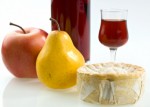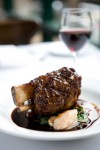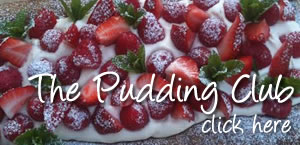Buying, Serving & Storing Wine28 Jun
Storage is no problem for most of us buying a couple of bottles at the supermarket or high street multiple wine shop. After all these are going to be drunk within the next day or two.
Nevertheless, when you get them home place the whites in a cool area such as the garage floor, and the reds in the dining room.
Most white wines are best-enjoyed cool, but not deeply chilled from over-nighting in a fridge. A cool bottle should only need 20 to 30 minutes in a fridge. At the same time the majority of red wines will get to the correct temperature if left for a few hours on the dining room sideboard. However, there are some young reds – Beaujolais and Gamay from the Touraine – that are actually better when served very lightly chilled.
If you are buying wines for laying down, then its best to get them from an independent wine merchant with a ‘fine wine’ reputation. This is because the supermarkets and high street stores expect that their wines won’t be kept for more than a couple of weeks, and store them accordingly.
Fine wines can be aged in a good cellar. That will be a dark, preferably damp, room where the bottles can be stored always on their sides, off the floor, either in their boxes or in wine racks that you can get from most proper wine merchants.
Sparkling wines, once on their sides, should be left well alone and not taken out of their racks to show off to friends. Any movement excites the bubbles, held in solution, and this tends to age them prematurely.
Today we are drinking more and more young wines, both white and red. These are invariably ‘closed’ and need to be exposed to air to enable them to breathe and open up so that we can enjoy their full flavours and aromas.
Decanting young wines is simple. You don’t even need a decanter. Pour the wine slowly into a clean jug from a height of five of six inches. Next take a scrupulously clean kitchen funnel and gently pour the wine back into the bottle, trying to get it to flow down the side. Wrap a serviette around the neck to protect it from any splashes.
If it’s a red wine, just leave the wine on the table, white wines should have their corks placed back in the top and perhaps left standing up in the fridge for 20 minutes or so.
You will be surprised how this pouring from one vessel to another and back will have opened up the most stubborn wine. Some years ago at a dinner in France we were served a young wine that was so tightly closed that a wine merchant colleague stood on the table and poured the wine into a carafe placed on the floor. While not recommending this practice in polite society, it certainly did the trick.
The other reason, of course, for decanting red wines is to separate them from any deposit that they might have formed while they mature. This is because all the colour of red wines is actually microscopic pieces of skin held in suspension in the liquid. Over the years some of these tiny particles may drop to the bottom of the bottle as the wine matures and slowly turns from the purple of youth to tawny rimmed maturity.
Decanting these wines does demand some skill and perhaps a curved decanting funnel. Leave the bottle standing upright over night, then gently remove the cork. Now, place the funnel in the neck of the decanter or flask and very gently pour, stopping immediately any sediment starts to appear.
Experts hold the bottle in one hand, and the decanter in another, place a lighted candle beneath the neck of the bottle and pour from one to the other at an angle –stopping as soon as the candlelight highlights any sediment in the neck of the bottle.
Decanting Vintage Port, or very old red wines that might have thrown a deposit.
Fine vintage Ports are aged in the bottle and tend to throw a great deal of deposit. This is made up from the solids – mainly minuscule bits of grape skin that give the wine its colour. Gently take the bottle up from its rack and place it standing up on end in the dining room 36 hours before you want to open it. This will encourage most of the solids to drop to the bottom.
Decanting Port is an art. If it is a very old bottle its cork will be protected by sealing wax that has to be removed by gently tapping with a light hammer. The cork will be fragile, so use your corkscrew with great care and very gently remove it. Now you will need a spotlessly clean and dry decanter, and preferably a decanting funnel and a candle or small, bright pocket torch. If you haven’t got a decanting funnel any kitchen funnel will do – as long as it is spotlessly clean and free from any taint. If you have any coffee filters handy, then place one in the funnel.
Hold the bottle in one hand, and the decanter in the other, both at around angles of around 45º. Now, very gently pour the wine into the funnel placed in the top of the decanter, with the candle or torch placed so that it shines up into the neck of the bottle. Keep an eagle eye on the neck and stop pouring as soon as any deposit starts to appear. What’s left in the bottle can be stored in the fridge for adding to meat juices to make proper gravy (in place of gravy powders) or adding to stews and even home made meat soups.
Written by Philippe Boucheron


 But back to our food and wine matching. Regular readers of this column will know how much I enjoy pairing both everyday and even obscure dishes with a suitable wine. I won’t say the ‘correct’ one, as that would be presumptuous. For example at a recent dinner for some 40 guests I served a lightly chilled St Nicolas de Bourgueuil, a red Cabernet Franc from the Loire with seared salmon. At first I could sense the consternation and then the pleasure of my fellow diners as they discovered just how perfect a match they made. Like all of us brought up to believe white with fish and red with meat they considered it wrong to serve a red wine, especially one that was chilled, with salmon.
But back to our food and wine matching. Regular readers of this column will know how much I enjoy pairing both everyday and even obscure dishes with a suitable wine. I won’t say the ‘correct’ one, as that would be presumptuous. For example at a recent dinner for some 40 guests I served a lightly chilled St Nicolas de Bourgueuil, a red Cabernet Franc from the Loire with seared salmon. At first I could sense the consternation and then the pleasure of my fellow diners as they discovered just how perfect a match they made. Like all of us brought up to believe white with fish and red with meat they considered it wrong to serve a red wine, especially one that was chilled, with salmon. Lamb shank with rosemary and mint was a delight with a patrician Châteauneuf-du_Pape, while the beef with barbecue sauce was brought to life by a South African blend of Cabernet Sauvignon and Pinotage. Duck breasts in an orange sauce were truly succulent when accompanied by a Sancerre, but perhaps the surprise of the afternoon was putting our Australian Bushland Merlot Rosé with a pork chop with apple sauce. I have since tried it with roast pork with plenty of crisp crackling and apple sauce from my own Bramley apples and it was, in the words of Michael Winner, ‘historic’.
Lamb shank with rosemary and mint was a delight with a patrician Châteauneuf-du_Pape, while the beef with barbecue sauce was brought to life by a South African blend of Cabernet Sauvignon and Pinotage. Duck breasts in an orange sauce were truly succulent when accompanied by a Sancerre, but perhaps the surprise of the afternoon was putting our Australian Bushland Merlot Rosé with a pork chop with apple sauce. I have since tried it with roast pork with plenty of crisp crackling and apple sauce from my own Bramley apples and it was, in the words of Michael Winner, ‘historic’.

